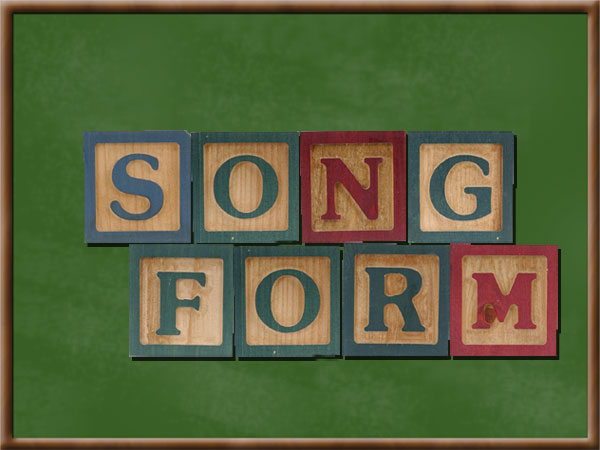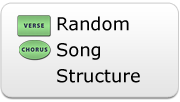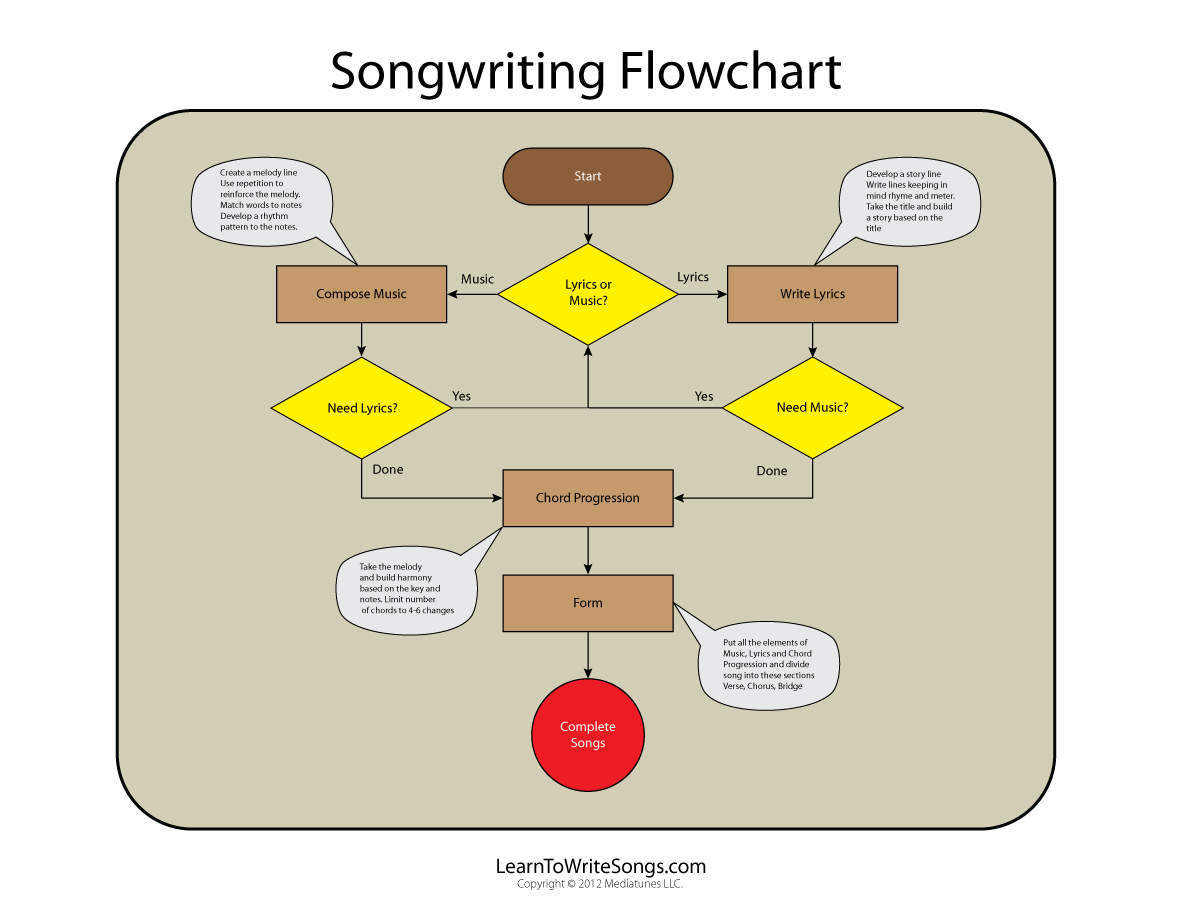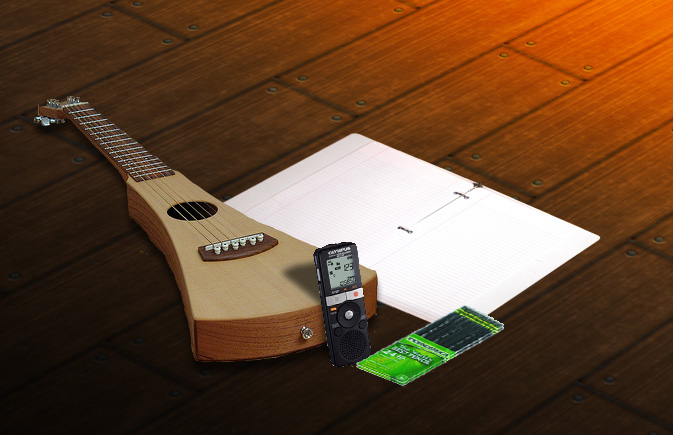Songwriting Tools to Outline Song Ideas

 Writing a song from start to finish can be a daunting task without tools and strategies. I’d like to share with you one tool for to outline song ideas stemming from an understanding of the structure of our songs. Let’s explore various methods to outline song ideas using different songwriting tools.
Writing a song from start to finish can be a daunting task without tools and strategies. I’d like to share with you one tool for to outline song ideas stemming from an understanding of the structure of our songs. Let’s explore various methods to outline song ideas using different songwriting tools.
Song Structure
When I say song structure, I’m talking about the form.
This is perhaps the most common and widely used structure there is, highly effective in getting right to the main point without much dallying around.






Here is another common structure







Other structures include




it’s often called, AABA. In this structure, there is a short refrain line capping off the most important position of the verse – the last line. Sometimes songs with choruses have an extra verse at the end. In this case, the third verse often provides a break-down, taking the dynamic of the song back down to a simmer before the last chorus takes us up again for one last burst of energy.
Look for these forms used by your favorite artists. Commercial songwriting rarely incorporates a form outside of these typical structures, so they should be easy to find.
Using Song Forms to Interest the Listener
These forms are common because they’re so effective. They are what we’re used to hearing, and what get the message of the song across with clarity and a pace that keeps the listener compelled. So our question might be, how can we use these forms to increase the interest our listeners feel in our songs?
You might have had the opportunity to be in the audience during an open mic where songwriters showcase their new and often rough material. Perhaps you noticed yourself getting bored, impatient, disinterested, or even confused. When we listen with a critical ear to songs, we can use what we know about form to diagnose some of the major elements that can cause these negative or apathetic reactions from our audience. Let’s look at what some of those elements are.
Power Positions
The function of a chorus is to drive home our main point. The section as a whole should speak with clarity towards one main idea, and within the section, the power positions should hold the title. Power positions are often the first and last line, and sometimes the middle line depending on the structure.
When we use repetition of a title, we are clearly showing the listener what message is most important. If we have varying messages in the power positions, what we’re showing the listener is that we’re not sure what our main message is.
Watch for instances where you might have dueling titles. Two titles don’t make for a stronger message, but a more diluted song idea.
Verse Length
The function of the verse is to set up the foundation of the story. We’re drawing a convincing argument here towards why the listener should invest emotionally in our song. We might provide a more personal viewpoint in this section, drawing from real-life detail, describing a specific moment or event.
Consider the length of this section, and how each line adds interesting and valuable new information. If you find yourself redundant, or expressing yourself in vague, abstract language, the listener may wander off for lack of understanding. Finding a good balance between concrete information and an explanation of that concrete information as it relates to the thoughts and feelings of the characters is important.
Verses that last too long, or too many verses before the chorus section delays the main message. It’s like a conversation in which one person talks and talks and talks. We begin to forget where we’re going, and though the words may have value on their own, they have little context within the bulk of the message.
Repetition
There is a reason why commercial songs are so repetitious. Repetition makes a song easier to remember, even after just one listen. Repetition also clarifies the main point of the song, and allows for melodic and harmonic hooks to burn themselves into our unsuspecting brains. Consider whether you’re putting too much pressure on yourself to write ‘smart’, or offer the listener a new title with each line of your chorus.
Challenge yourself to repeat the title in the first and last line of a 5-line chorus. Or, repeat the title in the first and third line of a four-line chorus. Give yourself permission to write a four-line chorus where each line is the title. If we’ve set up the story in our verses, the chorus doesn’t have to do the work of giving that title value – it’s already been done.
Bridges
The function of a bridge is to change the lyrical perspective, lift the melody or break the dynamic down one last time, and add interest and energy to the last chorus. Beware of bridges that are too long, as we lose our direction heading towards the last chorus. Short two-line bridges can be very effective, giving us the contrast we need to make that last chorus really pop.
Conclusion: Songwriting Tools to Outline Song Ideas
To outline song ideas the best songwriting tool is to develop a good song form. This includes taking various parts like verse, chorus and bridge and arrange them is an orderly fashion. The song form will provide a progression of ideas for the listener to follow. To help you ouline song ideas click on the “Random Song Structure” icon below.






Leave a Reply